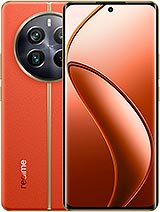Oppo F27 Pro+ alternatives
Tap above to see alternatives.
Redmi 13C alternatives
Tap above to see alternatives.
2x2.6 GHz Cortex-A78
6x2.0 GHz Cortex-A55
2x2.2 GHz Cortex-A76
6x2.0 GHz Cortex-A55
8GB 256GB (UFS 3.1)
6GB 128GB (UFS 2.2)
8GB 256GB (UFS 2.2)
(f/1.7, (wide), 1/2.0", 0.7µm, PDAF)
2 MP
(f/2.4, (macro))
f/1.8, 28mm (wide), PDAF
0.08 MP
(auxiliary lens)
1080p@30/60/120/480fps
720p@960fps
(f/2.0, (wide))
1080p@30fps
SIM1: Nano, SIM2: Nano
SIM1: Nano, SIM2: Nano
FDD: N1, N3, N5, N8, N28
TDD: N77, N78
FDD: N1, N3, N5, N8, N28
TDD: N40, N78
FDD: N1, N3, N5, N8, N28
TDD: N77, N78
FDD: N1, N3, N5, N8, N28
TDD: N40, N78
In this comparison, the Oppo F27 Pro+ with the Mediatek Dimensity 7050 (6nm) performs better than the Redmi 13C with the Mediatek Dimensity 6100+ (6nm), thanks to its more efficient chipset.
The Oppo F27 Pro+ offers 3 years of OS updates, while the Redmi 13C provides 2 years. These phones will receive the same duration of security updates.
Oppo F27 Pro+ has a superior AMOLED display, while Redmi 13C uses an LCD panel. Moreover, it offers a higher 120 Hz refresh rate for smoother scrolling. Oppo F27 Pro+ also has a brighter display with 950 nits, improving outdoor visibility. Notably, Oppo F27 Pro+ has a higher resolution display, resulting in sharper visuals.
Both phones have the same 5000 mAh battery capacity. Oppo F27 Pro+ supports faster wired charging at 67W.
Oppo F27 Pro+ offers better water and dust resistance with an IP69 rating.












